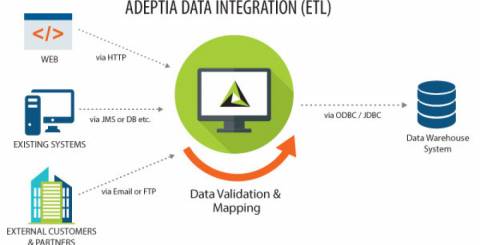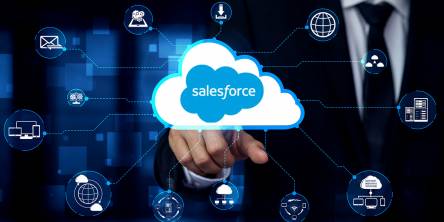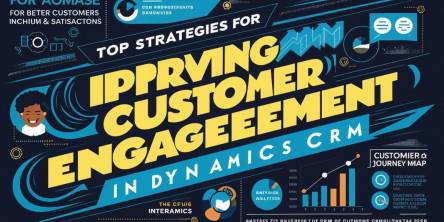Selecting the Best Data Integration Platform for your Business

Data integration platform is becoming a valuable technology for not only managing structured or unstructured data but also to aligning people, processes, and technologies. Selecting a robust data connectivity tool is tough as the market is dense with innumerable players. Before investing on an integration tool, organizations should evaluate a lot of factors. To address integration needs, a data integration tool should combine transformational and legacy systems, foster innovation, and deliver consistent data across all channels.
Here are some next generation capabilities an integration tool must promise to ensure data delivery and data delivery across all channels:
Business Intelligence (BI): Intelligence is no longer a business need but it is an imperative and business enabler. Organizations can make impactful business decisions by studying the intelligible information and augment the growth. For deriving the information, a tool should support diverse data models, predictive modeling, and Hadoop distributions.
Master Data Management (MDM): A next generation data integration tool should support MDM capabilities.The tool can be used to build flows for data access and synchronization to bring data from customer facing applications, and partner networks. It should enable synergy across multiple digital platforms and endpoints.
Uniform Data Access: Database-level consistency across applications, on internal and external systems in any direction. It should enable flexibility to ensure usability across digital touchpoints. Uniform data access prevents disruptions to business operations and ensure business continuity.
Inter Enterprise Data Sharing: Organizations need to interchange data from external trading partners. This provides the ability to address rough integration challenges and accelerate the time to revenue. Modern data integration tool should support dynamic technical environment for seamless inter enterprise data sharing.
Business Process Management: Advanced integration tools pack Enterprise State Bus (ESB) and Process management controls. Such controls support the entire data lifecycle management and also streamline processes. They establish a single source of truth to eliminate data duplication and manage processes. Advanced tools help in liberating data from silos and help users to gain more control over the processes.
Data Lake Preparation: Innumerable problems can be solved with a data lake. A modern solution should facilitate semantic and consistent approach to optimise data quality. It should also help users in integrating nonrelational structures and disparate workloads. With a robust solution, even a business user can design flows for mapping and piping data across far flung corners and prepare a futuristic data lake.
Data Migration: Data migration is another important feature of a data migration tool. A good solution moves data from one platform to upgraded version of an application. A data integration tool is expected to migrate information with automated performance optimization and metadata capabilities. Another relevant feature is service-oriented architecture (SOA) data service for enhances reusability.
Pricing: It is important to evaluate an organization's pricing and sales channel. Cost metrics like performance metrics, toolsets, and offerings must be compared. The pricing should be studied in terms of future project and scalability requirements. CIOs should evaluate that how a vendor is offering dedicating horizontal or vertical capabilities to support end user interests and integration needs.
Innovation: Next-gen integration requires synergistic layouts and templates for handling highly distributed data integration volumes. It needs to deliver optimal processing of transient data with advanced application integration approaches. Organizations should evaluate different use cases to know vendor centric capabilities that foster innovation.
The vendor should display an understanding of emerging technologies and business trends. Without market awareness they can’t ensure interoperability of systems and data quality. Tools should deliver metadata modeling, and address big data and data virtualization requirements. A good tool should provide the runtime functionality via a web services interface to manipulate and control the runtime environment.
Data Migration: Data migration is another important feature of a data migration tool. A good solution moves data from one platform to upgraded version of an application. A data integration tool is expected to migrate information with automated performance optimization and metadata capabilities. Another relevant feature is service-oriented architecture (SOA) data service for enhances reusability.
Similar Articles
The global market now firmly acknowledges that software has become integral to almost every facet of our lives, especially considering the technology-driven world in which we now live. No matter if they are the social media apps we use to stay connected to friends and family or the sophisticated systems that drive business operations -- we lean on different software every single day
In today’s software development and increasingly agile environments, continuous integration (CI) has proved to be a critical best practice that comprehensively applies to QA testing. Continual integration helps provide the necessary steps to ensure that the new code can be integrated with the rest of the software products' code base to be developed in an effective environment that is as error-free as possible.
The global healthcare sector has been embracing digital solutions for a while now. But to what end, one may wonder? Well, simply put, the sector has been quick to integrate digital solutions to help enhance the quality of patient care and operational efficiency.
The retail sector has been subject to continuous advancement thanks to the changing needs and demands of consumers. And it is also a well-known fact that shopping experiences have and must mirror technological and societal advancements. Today, customer expectations are unequaled, demanding consistent and customized experiences across different platforms.
Virtual Hard Disk (VHD) files play a role as they store all the data for a virtual machine. If these files get damaged or mistakenly deleted it can have repercussions, impacting not data integrity but also operational continuity.
Corporate transparency is essential in building stakeholder trust and credibility in today's evolving business environment. As businesses grow and adapt to changing regulations, ensuring adherence to rules and maintaining records has become increasingly intricate.
Among the solutions developed over the past few decades, Salesforce Financial Services Cloud (FSC) has emerged as the definitive choice for gaining flexibility, visibility, and long-lasting, inclusive growth in the financial sector.
Open source software (OSS) is distributed with its source code, which means it can be distributed, modified, and used freely with the original rights. Most users never see the source code, a critical part of the software.
It's one of the keystones, basic but key in the successful highly competitive modern business environment, where the connection with the customer is a must.









